
By David Eskenazi and Steve Rudman
In the spring of 1950, figuring it was high time, Emmett Watson of The Seattle Times wrote the equivalent of a sports page ode to Eddie Taylor, a pint-sized coach who had labored for many years ultimately under five managers for the Seattle Indians and Seattle Rainiers. As was Watsons bent, he went without a long preamble and got straight to the point.
Like the vice president of Russia, penned Watson, a baseball coach is a pretty anonymous character. His job is thankless, the pay is only fair and his security depends on how the No. 1 guy, the manager, stands with the front office.
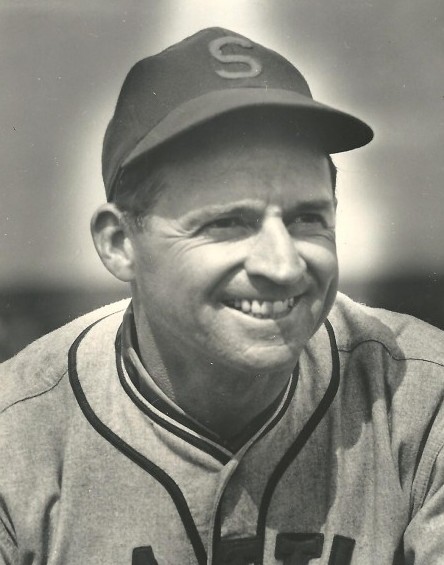
But Eddie is a rare exception in the minor leagues. He isnt getting rich, but his pay tops any other coach in the Pacific Coast League, and many of the coaches in the majors. Hes survived (at the time of Watsons article) two managers at Sicks Stadium, and he stands high with the front office.
Taylor was one of the few small men who ever made good in baseball. Never a great player, he cracked the majors twice with the Chicago White Sox (1922-23) and once with the Boston Braves (1926).
Then in his early 20s, the 5-foot-6 Taylor had two spring training tours with the White Sox but didnt make the major league roster. That he ever played for the Braves is astonishing.
On Aug. 18, 1925, while toiling for Class A Albany in the Eastern League, Taylor lost sight of a sailing fastball and crumpled at the plate when the pitch hit him in the head. For weeks, Taylor lingered in a hospital with a fractured skull, life or death a tossup. He lost hearing in one ear as a result, but during his hospital confinement a strange thing happened.
For perhaps the only time in history, Watson explained, a major league club thought enough of a rookie to buy his contract, yet it wasnt even sure if it was buying a shortstop or a corpse.
Taylors sale to the Braves was Sept. 5, 1925. Nearly a year later, Aug. 15, 1926, Taylor found himself stationed at third base for the Braves in a game against the Brooklyn Dodgers, then at the apex of their dem Bums days, at Ebbets Field. Nash & Zullo, who wrote the engaging Baseball Hall of Shame series, called, with predictable hyperbole, Aug. 15, 1926 an immortal day in baseball history.
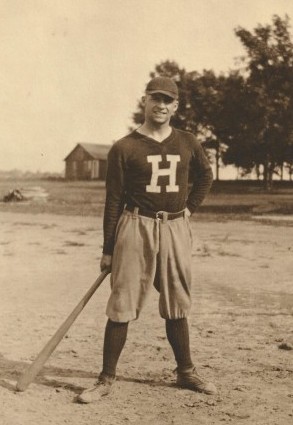
For Hall of Shame purposes, it was. On that date, Babe Herman, the daffiest of the Dodgers and later one of three players to hit for the cycle three times, became the only man in baseball history to double into a double play.
It happened in the seventh inning with the score tied 1-1. With one out, the Dodgers loaded the bases, getting Hank DeBerry on third, pitcher Dazzy Vance on second and Chick Fewster on first. That brought up Herman, who lined a hard shot to the right-field wall for a sure double, maybe even a triple.
DeBerry scored. Vance held up until he saw the ball carom off the wall, at which point he steamed for third with Fewster close on his heels. Behind them both, rounding second, came Herman, head down, arms pumping.
Herman was not yet infamous for his base-running misadventures on two occasions in 1930 (May 30 and Sept. 15), he stopped to watch a home run while running the bases and was passed by the hitter, reducing both homers to singles but he provided a glimpse of much ineptitude to come by heading for third.
Brooklyns third-base coach, Mickey ONeill, saw a calamity unfolding and yelled at Herman, Go Back! Go Back!” Herman paid no heed. Meanwhile, Vance thought ONeill was yelling at him, so he hustled back to third just in time to meet Fewster arriving from second. Then Herman came sliding in and found himself the third stooge simultaneously on third.
By this time, the relay from the outfield had reached Eddie Taylor, momentarily befuddled at the hot-corner logjam. Eddie didnt quite know who was out and who was safe, so he tagged everyone he laid eyes on, effectively tripling up Fewster, Vance and Herman, although Vance was subsequently declared safe because he arrived at third base first.

Taylors heads-up play didnt translate into a long major league career, but his field smarts kept him employed in professional baseball for the 60 years, with 14 organizations, as a good minor league player and as a coach, manager and scout at both the major and minor league levels.
Born Nov. 17, 1901 in Chicago, IL., Taylor grew up in the Windy City and became a professional ballplayer when he signed with Class A Albany of the Eastern League as a 20-year-old in 1922. In 1925, he hit .328 and became an Eastern League All-Star and the leagues Most Valuable Player, edging out future major league manager Leo Durocher.
After his Sept. 5, 1925 sale to the Braves, Taylor played 92 major league games, mainly backing up future Hall of Famer Dave Bancroft at shortstop. He batted .268 with 73 hits and four stolen bases and played his final major league game Sept. 29, 1926, at which point he embarked upon a 10-year journey of wandering from one minor league town to the next.
From 1927-29, Taylor played for AA Buffalo of the International League and AA Toledo of the American Association. In 1930, he played for Class A Birmingham of the Southern Association, hitting .301. Then he moved to Class A Beaumont of the Texas League, where he hit .300, made the All-Star team and finished second in MVP voting to Dizzy Dean.

Taylors .300 average was two percentage points higher than 22-year-old teammate Jo Jo White, with whom Taylor would re-unite in Seattle nearly a decade later.
Taylor spent 1932-33 and part of 1934 with the AA Kansas City Blues (hit .322 in 1932) of the American Association, worked in 56 games for the 1934 Syracuse Chiefs (AA) of the International League and ended that year with the Class A Atlanta Crackers of the Southern Association.
During one of Bill Kleppers junkets to the east and south late in 1934, the Seattle Indians owner spotted Taylor playing for the Crackers and purchased his contract as part of Kleppers annual task of re-stocking the Dutch Ruether-managed ball club, which already featured three players pitcher Dick Barrett, third baseman Dick Gyselman and outfielder Bill Lawrence who would play significant roles in three consecutive Pacific Coast League championships (1939-41).
Taylor brought to Seattle a career minor league batting average of .295, and The Times described Kleppers acquisition as a peppery little utility man. Almost as soon as Gyselman saw the 5-foot-6, 140-pound Taylor, he quipped, This has to be the only man in baseball who is small enough to stand up in an upper berth.
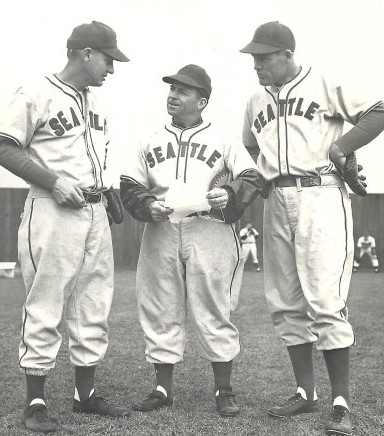
On April 23, 1935, a day after Indians launched their season with an 8-4 victory over Sacramento, The Times ran the following: Just about every Seattle Indian who helped defeat Sacramento won some kind of merchandise prize. The only ones who didnt connect were Alfalfa Mike Hunt (0-for-4) and tiny Eddie Taylor (0-for-3).
For amusement purposes, and to illustrate the difference between then and now, these were among the giveaways Hunt and Taylor missed out on: Howard Craghead received a Dobbs hat from Bender & Klockstad for hitting a triple, and a smoking stand from Standard Furniture as the winning pitcher.
For hitting a home run, Hal Spindel received knickers from Hugo Seren Inc. plus $5 meal tickets from the Cornelius Café and Wheelers Café. George Grantham got a cigarette lighter from the Up & Up Café and a box of cigars from Clancys Cigar Store for scoring a run.
Bill Lawrence and Andy Harrington made off with the most booty. Lawrence received a $10 meal ticket from Rippes Café for a single, a case of Rheinlander beer from Ben Paris for a double, a case of Olympia beer from Brownies for becoming the first Indian of the season to reach third base, a free haircut from the Mayflower Barber Shop and a steak dinner at the Doghouse Restaurant for fine play.
Harrington collected a $5 flower order from Peter Rosaia Co. and a $3.50 pipe from Brewster Cigar Store for drawing the first walk of the season, a pocket knife from Goldsmiths Inc., two dinners at the Germania Café for scoring a run, and a cigarette lighter from Friedlanders for an RBI.
Although Hunt and Taylor got nothing, that was better than the ham that Jerry Henry Packing Co. presented to Herman Michael for making the seasons first error.

Taylor had a decent year, batting .280, but felt isolated in Seattle and asked Klepper to move him to a club in the Midwest. Klepper wouldnt or couldnt and Taylor opened 1936 with Seattle. When the 34-year-old slumped (.209), the Indians released him July 1.
Taylor began his transition into coaching in 1937 when the Class B Tacoma Tigers of the Western International League hired him as a player manager, a position that lasted until Jan. 21, 1938, when Jack Lelivelt, former manager of the Los Angeles Angels who had been hired to run the Seattle ball club for new owner Emil Sick, brought him back to Seattle as a coach and utility player.
Ive never been in the big money, but baseball has treated me well and Im tickled to be working under Lelivelt and for such loyal fans as those in Seattle, Taylor said.
After witnessing Fred Hutchinsons historic season of 1938 with the newly named Rainiers, Taylor enjoyed a front-row seat for PCL championships in 1939 and 1940 under Lelivelt. After Lelivelt died suddenly after the 1940 season (Taylor served as a pallbearer at Lelivelts funeral) as he was putting together his 1942 roster, Lelivelts replacement, Bill Skiff, retained Taylor on his coaching staff.
Although he missed the 1942-43 seasons while serving in the Navy Air Corps during World War II (assigned to the St. Marys Naval Pre-Flight School), Taylor worked under a succession of managers Skiff (1941-46), former Beaumont teammate Jo Jo White (1946-49), Bill Lawrence (1949) and Paul Richards (1950) even though each manager had the option of bringing in his own coaches.
Eddie was just one of the best, Rainiers GM Earl Sheely told The Seattle Post-Intelligencer.
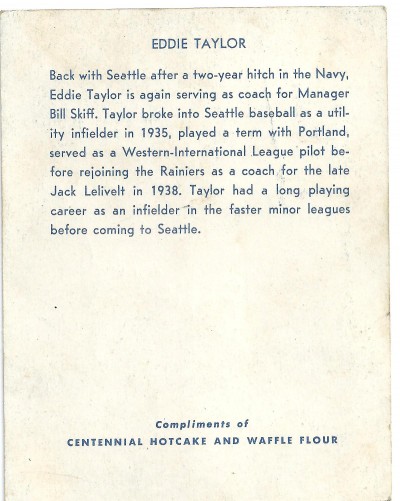
Sheely sought to reward Taylors loyalty to the club in October of 1947 after the Rainiers purchased the Great Falls franchise in the Class C Pioneer League with the intent of stocking it with Rainiers prospects. Sheely offered Taylor the position of general manager, but Taylor turned it down over a reluctance to establish a new home in Great Falls, as The Post-Intelligencer wrote.
Taylor had an additional incentive for staying in Seattle, a decent-paying off-season job. Along with Gyselman and Edo Vanni, Taylor worked for King County Auditor Bobby Morris, a former prominent football referee and the Post-Intelligencers first Man of the Year (1935), in the department that issued drivers licenses.
In addition to coaching, Taylor became the Rainiers primary scout and pretty much ran their spring training operation, which is why he was in position to have a famous run-in with Durocher.
On March 22, 1950, the New York Giants B team, under the Durochers direction, played the Rainiers, managed by Taylor, in Palm Springs, CA. in a spring training game. The Rainiers won, but the game became inconsequential next to the near fight between Durocher and Taylor.
Seattles newspapers had not yet sent reporters to spring training, so they were forced to cobble stories together on the incident from vague wire reports. When a reporter, via telephone, finally asked Taylor what had sparked the confrontation with The Lip, Taylor merely said, I just reminded him of something that happened a long time ago.”
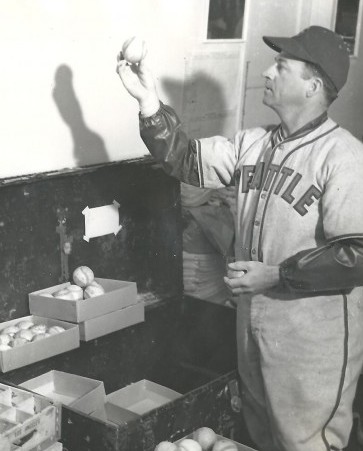
The truth finally emerged. Taylor positioned himself on the dugout rail, pulled out a pocket watch and started swinging it back and forth on a chain. When Durocher, in the other dugout, took notice, Taylor piped, Remember this? Taylor kept it up and, finally, Durocher became so angry that he bolted from his dugout and sprinted toward Taylor, intent on pummeling him.
Rainiers players restrained the beet-red Durocher, who had been accused years earlier of stealing a watch that belonged to Babe Ruth (Durocher vehemently denied the theft).
Seven months after that amusement, Sheely reluctantly fired Taylor, who had moved full-time into scouting, ascribing the termination to his belief that there were not enough prospects in the Pacific Northwest to justify paying a bird dog. At the same time, Sheely fired former outfielder Lawrence, who had been scouting for the Rainiers in the Bay Area.
Sheely wasnt alone in his belief that the Northwest had a dearth of prospects. Although the region had produced the likes of Walter Johnson, Harmon Killebrew (Idaho) and Earl Averill (Washington), most major league clubs did not consider the Northwest productive enough to keep a full-time scout there. Eddie Taylor ultimately changed their thinking.
Taylor purchased a white Cadillac and scoured the area for baseball talent, first in the employ of the Chicago White Sox and Philadelphia Phillies, and then the New York Yankees.
Driving 8,000-10,000 miles per baseball season, he uncovered and signed numerous major league prospects, none better than Mel Stottlemyre, whom he discovered for the Yankees in 1961.
That year, the 19-year-old Stottlemyre, one year out of high school in Mabton, WA., where he had grown up, attended Yakima Junior College. Taylor had first seen him pitching American Legion ball.
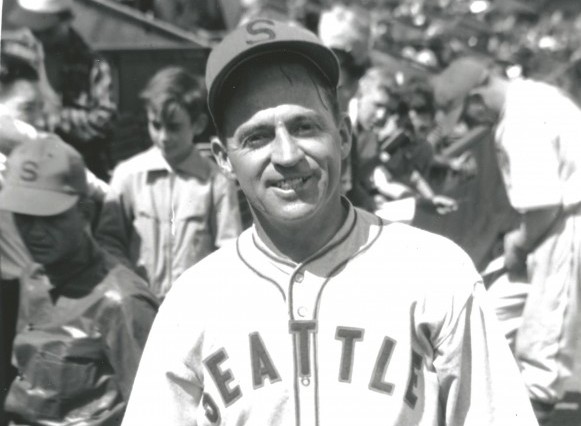
He has a good sinker and the courage and control to use it right, Taylor wrote in his report to the Yankees. I would recommend signing him for a small bonus, or a larger bonus contingent on performance.
On June 10, 1961, Taylor signed Stottlemyre for no bonus. The Yankees assigned Stottlemyre to Harlan, KY., a rookie league team.
In those days, the Yankee assigned each prospect a category, and policy speaks volumes about the success of the franchise. Each category represented what a particular scout thought about a players eventual prospects. The categories were: Class A, Class AA, Class AAA, Major Leagues, New York Yankees.
Taylor graded Stottlemyre as New York Yankees, and Stottlemyre validated Taylors assessment, winning 164 games in 11 major league seasons while earning five All-Star appearances. He twice (1965, 1969) led the American League in complete games.
Stottlemyre wasnt Taylors only prominent score. Among many others, he signed Steve Kline, a 16-game winner for the Yankees in 1972.

Taylors scouting successes created a lot of full-time jobs. By the mid-1960s, every major league team had scouts stationed in the Northwest, all because of Taylor, who worked for the Yankees from 1962-74 and the St. Louis Cardinals from 1978-82.
When, at 80 in 1982, the burden of travel became too great, Eddie retired to Chula Vista, CA. He died there after an extended illness 10 years later Jan. 30, 1992. He turned 90 the previous Nov. 17.
Like Emmett Watson, who had once written about him, Eddie Taylor had a habit of getting right to the point. Once when he was asked, When you scout, where do you find most of the good ballplayers?
Under contract, quipped Eddie.


———————————————-
Many of the historic images published on Sportspress Northwest are provided by resident Northwest sports history aficionado David Eskenazi. Check out Davids Wayback Machine Archive. David can be reached at (206) 441-1900, or at seattlesportshistory@gmail.com

8 Comments
another great article, folks. love the local history and color.
another great article, folks. love the local history and color.
I agree with Tian Biao: These “Wayback Machines” are worth waiting for…best feature on Seattle sports history on the internet.
I agree with Tian Biao: These “Wayback Machines” are worth waiting for…best feature on Seattle sports history on the internet.
I would say that the WBM are among the best features on sports history to be found on the internet or anyplace else. Keep ’em coming. Thanks
I would say that the WBM are among the best features on sports history to be found on the internet or anyplace else. Keep ’em coming. Thanks
You know, a collection of these WBM features would make a hell of a book.
You know, a collection of these WBM features would make a hell of a book.